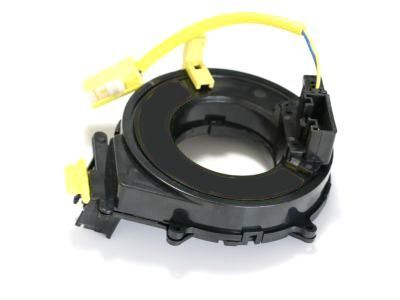This Clock Springs: An Small Part with a Big Impact
In contemporary vehicles, countless components work together to provide a smooth and secure driving experience. Within these parts lies a compact yet essential component known as the clock spring. While a lot of drivers may possibly have heard of it, the clock spring has a critical role in the functioning of multiple systems inside your car, particularly in relation to the steering column. It is especially significant in vehicles produced by brands like Toyota, where the clock spring is key to several safety features and driver functionalities.
The clock spring is crafted to maintain the electrical connection between the wheel and the vehicle's main electrical systems. This allows for critical functions such as the airbag system and steering wheel controls to operate flawlessly. When you turn the steering wheel, the clock spring unwinds and recoils, making sure that electrical signals can transmit to multiple components without any interruption. Grasping the significance of the clock spring is crucial for car owners, as any failure can lead to serious issues, impacting both safety and convenience while driving.
What a Clock Spring?
A clock spring represents an crucial component in a vehicle's steering column that plays its crucial role in connecting the steering wheel to the car's electrical systems. This flexible, coil-like device permits for the transfer of electrical signals while permitting the steering wheel to rotate freely during driving. Without a properly functioning clock spring, essential features such as airbag deployment and steering wheel controls can be rendered inoperative.
In numerous vehicles, including those from manufacturers like Chevrolet, the clock spring connects multiple electrical components, including the horn, cruise control, and airbag systems. The design allows the rotation of the steering wheel to happen without having to twist or damage the wiring that connects these components. toyota clock spring is vital for both the safety and convenience of the driver and passengers.
When a clock spring malfunctions, it can lead to several issues, including a non-working airbag, non-functional steering wheel controls, or warning lights lighting up on the dashboard. Regular maintenance and awareness of clock spring functionality can prevent potential safety hazards and ensure that all electronic components related to the steering column function as desired.
Importance of Clock Spring Element in Vehicles
The clock spring mechanism plays a crucial role in the complete functionality of modern automobiles. It connects the steering assembly to the car's electrical components, allowing for the transmission of information to various elements such as the airbag, sound system, and steering wheel controls. Without the clock spring, these features would not work correctly, causing a diminished driving experience and potential dangers.
In furthermore to its safety roles, the clock spring plays a part in the effortless operation of features that improve driver ease. Features like music controls and automatic speed regulation, which are typically built into the steering wheel, depend on the clock spring mechanism for dependable connections. A faulty clock spring can cause issues with these controls, causing frustration for the driver and impacting the entire functionality of the vehicle.
Moreover, the importance of the clock spring is underscored in cars equipped with modern safety systems. Many contemporary automobiles come with numerous electronic components that require accurate connections between the steering assembly and the vehicle's infrastructure. In automobiles such as those from Toyota, a malfunctioning clock spring mechanism can stop airbags from activating during an accident, thereby putting occupants at serious risk. Maintaining a functioning clock spring is crucial to make sure that all safety features are operational and that drivers can be certain in their vehicle's trustworthiness.
Typical Challenges and Maintenance Tips
Spiral cables can experience several frequent problems that may impact their functionality. One of the leading concerns is damage due to repeated use, leading to a malfunction in the electrical connections. This can lead to the absence of features such as airbag deployment, functioning horn, and steering controls. In some cases, operators may also see indicator lights on their instrument panel related to airbag malfunctions, signaling an issue with the spiral cable.
To prevent problems with the spiral cable, periodic checks are essential, especially in vehicles like Toyota models that are notorious for this issue. Inspecting the column for strange sounds or difficulty when steering can suggest a malfunction. It is also prudent to keep an eye on your vehicle's electrical components. If any features stop working unexpectedly, it may be necessary to get the spiral cable assessed by a specialist.
If you believe that your spiral cable is defective, prompt replacement is crucial for safety. Ignoring a malfunctioning spiral cable can lead to grave implications, including compromised airbag safety during an incident. When replacing a spiral cable, always choose quality parts that meet factory specifications to ensure reliability and efficiency, especially in Toyota vehicles where the spiral cable is integrated critical safety systems.
